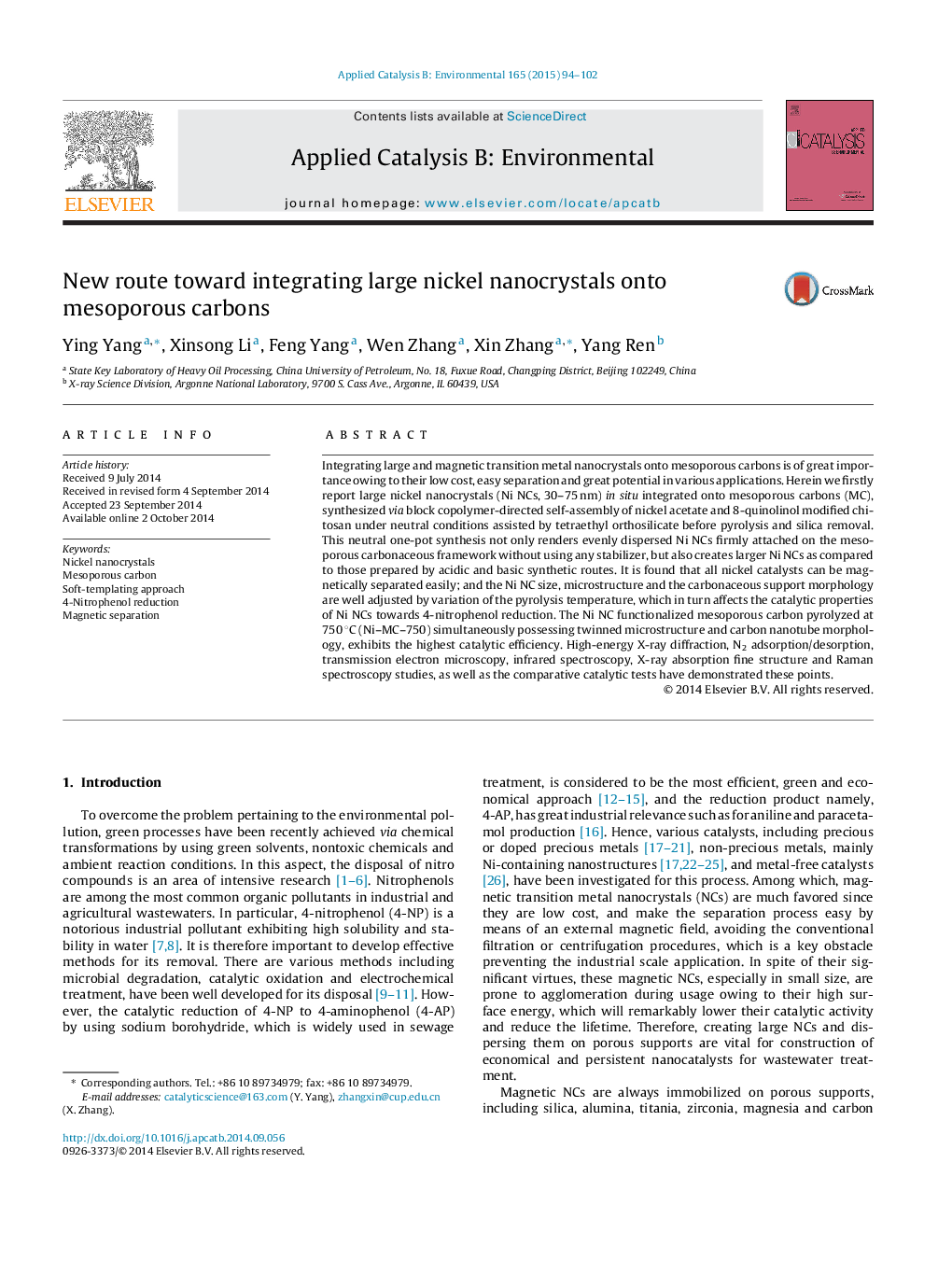| کد مقاله | کد نشریه | سال انتشار | مقاله انگلیسی | نسخه تمام متن |
|---|---|---|---|---|
| 45538 | 46416 | 2015 | 9 صفحه PDF | دانلود رایگان |
• Soft-templating synthesis of large nickel nanocrystals under neutral conditions.
• Nickel nanocrystals are evenly distributed on the carbonaceous framework.
• The size and microstructure of nanocrystals, and the support morphology are tuned.
• Ni catalyst pyrolyzed at 750 °C exhibits the best performance.
Integrating large and magnetic transition metal nanocrystals onto mesoporous carbons is of great importance owing to their low cost, easy separation and great potential in various applications. Herein we firstly report large nickel nanocrystals (Ni NCs, 30–75 nm) in situ integrated onto mesoporous carbons (MC), synthesized via block copolymer-directed self-assembly of nickel acetate and 8-quinolinol modified chitosan under neutral conditions assisted by tetraethyl orthosilicate before pyrolysis and silica removal. This neutral one-pot synthesis not only renders evenly dispersed Ni NCs firmly attached on the mesoporous carbonaceous framework without using any stabilizer, but also creates larger Ni NCs as compared to those prepared by acidic and basic synthetic routes. It is found that all nickel catalysts can be magnetically separated easily; and the Ni NC size, microstructure and the carbonaceous support morphology are well adjusted by variation of the pyrolysis temperature, which in turn affects the catalytic properties of Ni NCs towards 4-nitrophenol reduction. The Ni NC functionalized mesoporous carbon pyrolyzed at 750 °C (Ni–MC–750) simultaneously possessing twinned microstructure and carbon nanotube morphology, exhibits the highest catalytic efficiency. High-energy X-ray diffraction, N2 adsorption/desorption, transmission electron microscopy, infrared spectroscopy, X-ray absorption fine structure and Raman spectroscopy studies, as well as the comparative catalytic tests have demonstrated these points.
Figure optionsDownload as PowerPoint slide
Journal: Applied Catalysis B: Environmental - Volume 165, April 2015, Pages 94–102
